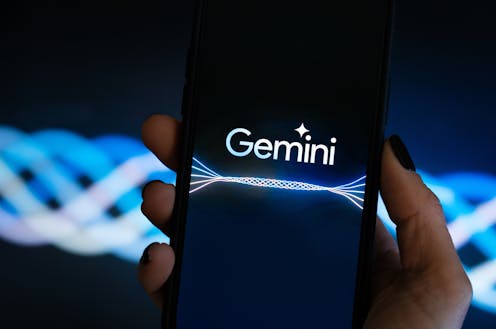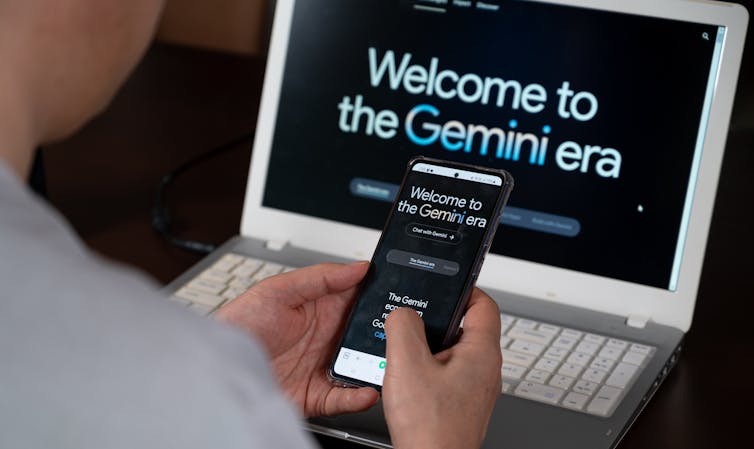
After widespread backlash, Google pulled its “Dear Sydney” Gemini ad from Olympics coverage. The ad featured its generative AI chatbot tool, Gemini, formerly known as Bard.
The advertisement featured a father and his daughter, a fan of United States Olympic track and field athlete Sydney McLaughlin-Levrone. The father, despite considering himself “pretty good with words,” uses Gemini to help his daughter to write a fan letter to Sydney, saying that when something needs to be done “just right,” Gemini is the better choice.
This advertisement sparked widespread backlash online about the growing role of generative AI tools and their impact on human creativity, productivity and communication. As media professor Shelly Palmer wrote in a blog post:
“As more and more people rely on AI to generate their content, it is easy to imagine a future where the richness of human language and culture erode.”
Critics argue that relying on AI for tasks traditionally done by humans will undermine the value of human effort and originality, leading to a future where machine-generated content overshadows human output.
The controversy brings up key questions about the preservation of human skills, and the ethical and social implications of integrating generative AI tools into everyday tasks. The question here is where the line should be drawn between AI and human involvement in content creation, and whether such a dividing line is necessary at all.
Anthropomorphic AI
AI tools are effectively integrated in almost all aspects of our daily activities, from entertainment to financial services.
Over the past few years, generative AI has appeared to become more contextually aware and anthropomorphic, meaning its responses and behaviour are more human-like. This has led more people to integrate the technology into their daily activities and workflows.
Many people, however, are struggling to strike a balance when it comes to using these tools. On the one hand, given enough human oversight, advanced models of ChatGPT and Gemini can deliver cohesive, relevant responses. In addition, the pressure to use these tools is strong, and some people fear that not using them will set them back professionally.
But, on the other hand, AI-generated content lacks a unique, human touch. Even as prompts improve, there remains a generic quality to AI responses.
To better understand the implications of AI-generated content on human communication, and the issues that stem from them, it’s important to adopt a balanced approach that avoids both uncritical optimism and pessimism. The elaboration likelihood model of persuasion can help us achieve this.
The nature of persuasion
The elaboration likelihood model of persuasion suggests there are two routes of persuasion: the central route and the peripheral route.
When individuals process information through the central route, they engage in thoughtful and critical evaluation of information. In contrast, the peripheral route involves a superficial assessment based on external cues, rather than the content’s quality or relevance.

In the context of AI-generated content, there is a risk that both creators and recipients will increasingly rely on the peripheral route. For creators, using AI tools might reduce the effort invested in crafting messages, knowing that the technology will handle the details.
For recipients, the polished nature of AI-generated content might lead to a surface-level engagement without deeper consideration. This superficial engagement could result in the undermining of the quality of communication and the authenticity of human connections.
This phenomenon is particularly evident in hiring. Generative AI tools can produce cover letters based on job descriptions and resumes, but they often lack the personal touch and genuine passion that human-crafted letters might convey.
As hiring managers receive an increasing number of AI-generated applications, they are finding it difficult to uncover the true capabilities and motivations of candidates, which is resulting in less-informed hiring decisions.
Where do we go from here?
This leaves us at a crossroad. While arguments can be made for the effective integration of AI with human oversight, there is also a significant concern that the perceived value of messages and our communication is diminishing.
It is increasingly apparent that AI tools are here to stay. Our collective line of inquiry needs to shift towards exploring a state of interdependence, where society can maximize the benefits of these tools while maintaining human autonomy and creativity.
Achieving this balance is challenging and begins with education that emphasizes foundational human capabilities such as writing, reading and critical thinking. Additionally, there should be a focus on developing subject matter expertise to help individuals to better use these tools and extract maximum value.
Clarifying the limits of AI integration is equally important. This may involve avoiding AI usage in personal communication, while accepting its role in organizational public communication, such as industry reports where AI can enhance readability and quality.
It is of timely essence to understand that our collective societal decisions will have significant future impacts. This moment calls for fellow researchers to deepen the exploration of the interdependence between humans and AI, allowing technology to be used in ways that complement and enhance human capabilities, rather than replace them.
Omar H. Fares does not work for, consult, own shares in or receive funding from any company or organisation that would benefit from this article, and has disclosed no relevant affiliations beyond their academic appointment.
This article was originally published on The Conversation. Read the original article.







